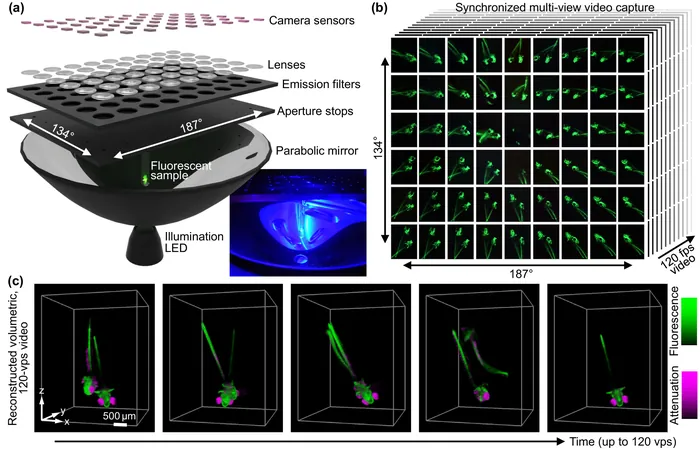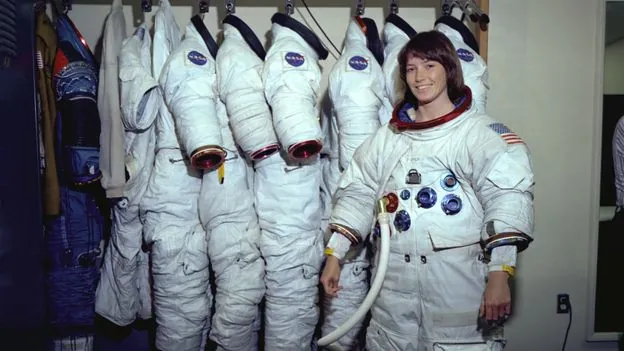
Revolutionary 4D Imaging Technique Takes Animal Behavior Studies to New Heights
2025-05-20
Author: Nur
Unlocking the Secrets of Movement
Biomedical engineers at Duke University have unveiled a groundbreaking imaging system that harnesses astronomical techniques to capture stunning 4D videos of small, freely-moving organisms like zebrafish and fruit fly larvae.
A Leap in Behavioral Studies
This innovative imaging tool promises to transform behavioral science, enabling researchers to conduct meticulous studies of animal movements. Published on May 5 in the journal Optica, the research showcases a leap forward in observing the intricate relationships between brain activity, environmental factors, and physical responses.
The Challenge of 3D Imaging
Until now, capturing high-resolution 3D videos of tiny organisms posed significant hurdles. Traditional methods rely on multiple cameras to monitor movement across vast areas, but the challenge lies in scaling down these observations to the cellular level without introducing motion artifacts, particularly when studying rapid movements.
Introducing ReFLeCT: A Game Changer
To tackle these issues, Roarke Horstmeyer, an assistant professor of biomedical engineering, and his lab have created the Reflective Fourier Light Field Computed Tomography (ReFLeCT) system. By integrating an array of 54 cameras with a parabolic mirror and cutting-edge computational algorithms, they can now produce swift 4D videos of model organisms.
How It Works: A Surprisingly Simple Setup
The setup involves a small tube that hangs in the center of a concave mirror, allowing a blue LED light to illuminate the tagged organisms from within. Cameras positioned above the mirror capture a spectrum of reflections, which the advanced algorithms then stitch together, generating an incredibly detailed 3D representation that evolves into dynamic 4D videos.
Precision Imaging with No Motion Blur
Horstmeyer emphasizes the brilliance of using synchronous camera capture: "With conventional 3D methods, you'd need to refocus as the model shifts, but our design captures every angle simultaneously, eliminating motion blur and maintaining the organism within the camera's field of view."
Breaking New Ground in Research
In their experiments, the team successfully filmed zebrafish and fruit fly larvae, achieving impressive resolutions and capturing up to 120 volume frames per second—a staggering speed compared to traditional microscopy techniques. This rapid imaging allowed researchers to observe behaviors never before seen.
Exciting Discoveries Await
One remarkable behavior observed was the wiggle-like movements in fruit fly larvae, akin to peristalsis—the same action seen in human swallowing. This discovery underscored the potential for revealing subtle, dynamic movements previously obscured by old techniques.
A Bright Future for Biologists
Looking ahead, Horstmeyer and his team aim to enhance ReFLeCT and foster collaborations with fellow scientists both at Duke and beyond. The excitement from biologists about the tool’s capacity for high-speed 3D movement research is palpable, signaling a new era in animal behavior studies. Horstmeyer envisions expanded applications in neuro-imaging, an avenue they're eager to explore.




 Brasil (PT)
Brasil (PT)
 Canada (EN)
Canada (EN)
 Chile (ES)
Chile (ES)
 Česko (CS)
Česko (CS)
 대한민국 (KO)
대한민국 (KO)
 España (ES)
España (ES)
 France (FR)
France (FR)
 Hong Kong (EN)
Hong Kong (EN)
 Italia (IT)
Italia (IT)
 日本 (JA)
日本 (JA)
 Magyarország (HU)
Magyarország (HU)
 Norge (NO)
Norge (NO)
 Polska (PL)
Polska (PL)
 Schweiz (DE)
Schweiz (DE)
 Singapore (EN)
Singapore (EN)
 Sverige (SV)
Sverige (SV)
 Suomi (FI)
Suomi (FI)
 Türkiye (TR)
Türkiye (TR)
 الإمارات العربية المتحدة (AR)
الإمارات العربية المتحدة (AR)